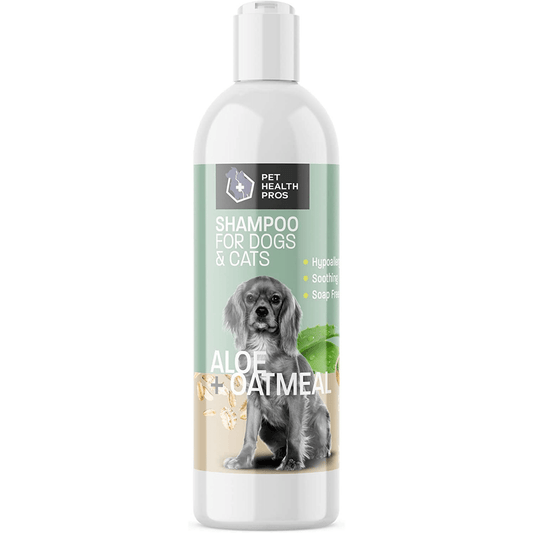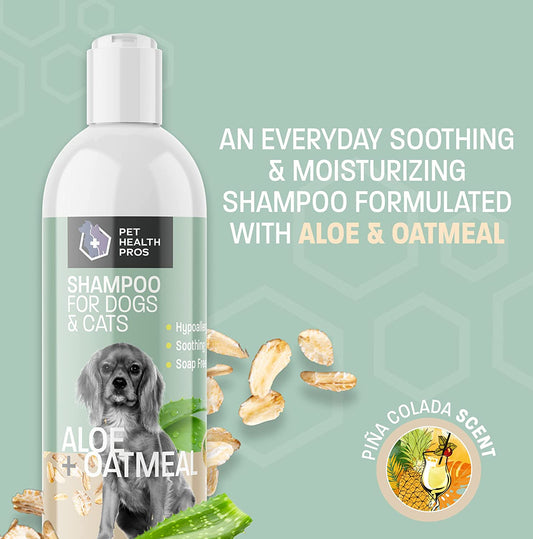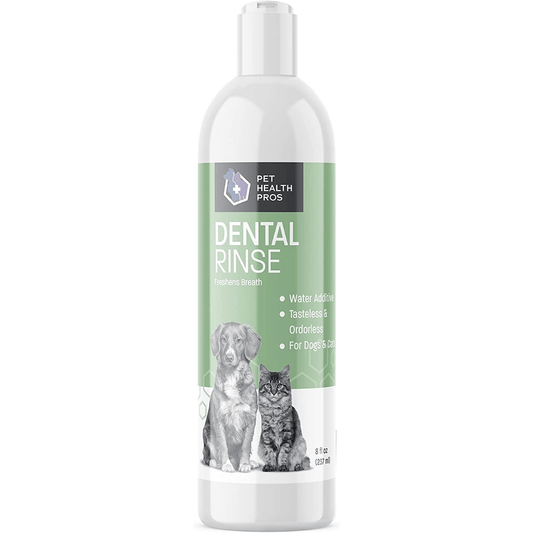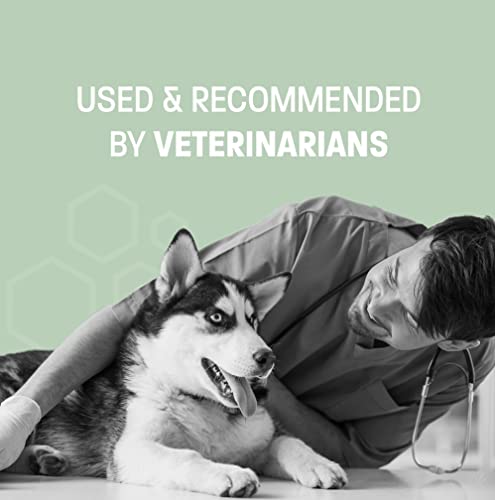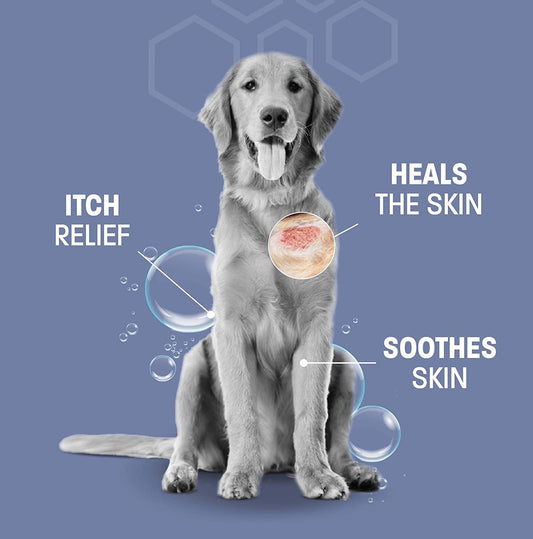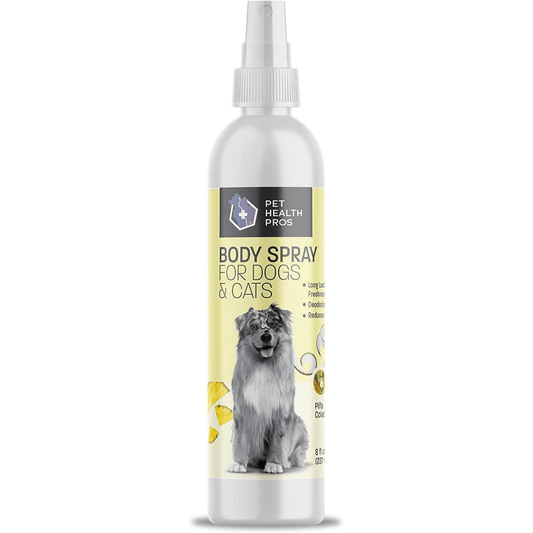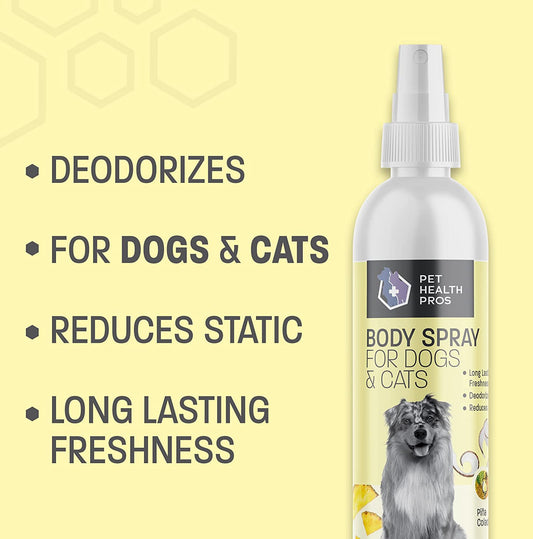Excessive scratching and biting in dogs can be a cause for concern for pet owners. Not only can it be uncomfortable for the dog, but it can also indicate an underlying health issue. Understanding the causes, identifying the symptoms, diagnosing the problem, and implementing appropriate treatment and prevention methods are essential for the well-being of our furry friends. In this article, we will explore the common reasons behind excessive scratching and biting in dogs and provide key takeaways to help pet owners address this issue effectively.
Key Takeaways
- Excessive scratching and biting in dogs can be caused by common skin conditions, allergies, parasites, or environmental factors.
- Visible signs of skin irritation, behavioral changes, hair loss, and secondary infections are indicators of excessive scratching and biting.
- Consulting a veterinarian and conducting skin scraping and laboratory tests can help diagnose the underlying issue.
- Treating excessive scratching and biting may involve medicated shampoos, oral medications, environmental modifications, and allergy shots.
- Preventing excessive scratching and biting in dogs can be achieved through regular grooming, a healthy diet, environmental control, and regular veterinary check-ups.
Understanding the Causes of Excessive Scratching and Biting in Dogs
Common Skin Conditions in Dogs
Dogs can experience a variety of skin conditions that can cause excessive scratching and biting. These conditions can be caused by allergies, parasites, or environmental factors. It is important to understand the underlying cause in order to effectively treat and manage the symptoms.
Allergies: The Culprit Behind the Itch
Allergies are a common cause of excessive scratching and biting in dogs. When a dog is allergic to something in their environment, their immune system overreacts and triggers an allergic response. This can lead to intense itching and discomfort for the dog.
Common allergens that can cause allergies in dogs include pollen, dust mites, mold spores, and certain types of food. It's important to identify the specific allergen that is causing the reaction in order to effectively manage the symptoms.
To determine if your dog has allergies, a veterinarian may recommend allergy testing. This can involve blood tests or skin tests to identify the specific allergens that are causing the reaction.
Once the allergens are identified, avoidance is the best way to prevent allergic reactions. This may involve keeping your dog away from certain plants or environmental triggers, using hypoallergenic bedding, and feeding them a diet that is free from the allergen.
In some cases, medications may be prescribed to help manage the symptoms of allergies. These can include antihistamines to reduce itching, corticosteroids to reduce inflammation, and immunotherapy to desensitize the immune system to the allergen.
It's important to work closely with your veterinarian to develop a treatment plan that is tailored to your dog's specific needs and to monitor their progress.
Parasites: Uninvited Guests on Your Dog's Skin
Parasites are a common cause of excessive scratching and biting in dogs. These tiny organisms, such as fleas, ticks, and mites, can infest your dog's skin and cause irritation and discomfort. They feed on your dog's blood and can reproduce rapidly, leading to a worsening infestation if not treated promptly.
To effectively manage parasites, it is important to regularly check your dog for any signs of infestation. Look for visible parasites or their droppings, which may appear as small black specks on your dog's skin or in their bedding. Additionally, be aware of any changes in your dog's behavior, such as excessive scratching or restlessness, as these can be indicators of a parasite problem.
Prevention is key when it comes to parasites. Use a veterinarian-recommended flea and tick preventative on your dog, especially during peak seasons. Regularly groom your dog and inspect their fur for any signs of infestation. Keep your dog's living environment clean and free of pests by regularly vacuuming and washing their bedding. By taking these preventive measures, you can help protect your dog from the discomfort and health risks associated with parasites.
Environmental Factors: Triggers for Scratching and Biting
Environmental factors can play a significant role in triggering excessive scratching and biting in dogs. Changes in the environment such as a new home, a new pet, or even rearranging furniture can cause stress and anxiety in dogs, leading to increased scratching and biting. Separation from owners can also be a source of stress for dogs, as they are social animals and thrive on human companionship. Lack of mental stimulation can contribute to boredom and frustration, which may manifest as excessive scratching and biting. Additionally, previous traumatic experiences can leave a lasting impact on a dog's behavior, potentially leading to compulsive scratching and biting.
To help minimize the impact of environmental factors on your dog's scratching and biting, consider the following:
- Provide a stable and consistent environment for your dog, minimizing changes that may cause stress.
- Ensure your dog receives plenty of mental stimulation through interactive toys, puzzles, and training exercises.
- Gradually introduce your dog to new experiences and environments, using positive reinforcement to build confidence.
- Seek professional help from a veterinarian or animal behaviorist if your dog has a history of trauma or severe anxiety.
Remember, understanding and addressing the environmental triggers for scratching and biting is an important step in helping your dog find relief and improving their overall well-being.
Identifying the Symptoms of Excessive Scratching and Biting
Visible Signs of Skin Irritation
When a dog is experiencing excessive scratching and biting, there are several visible signs of skin irritation that pet owners should look out for. Redness, swelling, and inflammation are common indicators of skin irritation in dogs. Additionally, dry and flaky skin may be present, along with scabs or sores caused by constant scratching. Hair loss in certain areas of the body and the presence of hot spots are also signs of excessive scratching and biting. These visible signs can vary in severity depending on the underlying cause of the irritation.
Behavioral Changes in Your Dog
Behavioral changes in your dog can be a sign of underlying issues that are causing excessive scratching and biting. Anxiety and stress are common culprits that can lead to behavioral changes in dogs. If your dog is constantly scratching and biting himself and also displaying other unusual behaviors such as restlessness, aggression, or excessive licking, it is important to consult with a veterinarian to rule out any medical conditions.
Hair Loss and Hot Spots: Indicators of Excessive Scratching
Hair loss and hot spots are common indicators of excessive scratching in dogs. When a dog constantly scratches and bites at their skin, it can lead to irritation and inflammation, resulting in hair loss and the formation of hot spots. Hot spots, also known as acute moist dermatitis, are red, moist, and painful areas on the skin that can become infected if left untreated.
If you notice your dog experiencing hair loss or the presence of hot spots, it is important to address the underlying cause of their excessive scratching. This may involve consulting a veterinarian to determine if there is an underlying skin condition, allergy, or parasite infestation. Once the cause is identified, appropriate treatment can be administered to alleviate the itching and promote healing.
In addition to addressing the underlying cause, it is essential to prevent further irritation and promote healing of the affected areas. This can be done by keeping the affected areas clean and dry, avoiding excessive bathing, and using medicated shampoos or topical treatments specifically designed to soothe and heal the skin. It may also be necessary to use an Elizabethan collar or other protective measures to prevent the dog from further aggravating the affected areas.
Remember, hair loss and hot spots are not normal for dogs and should be taken seriously. If left untreated, they can cause discomfort and potentially lead to secondary infections. By addressing the underlying cause and providing appropriate treatment, you can help your dog find relief from excessive scratching and promote their overall skin health.
Secondary Infections: A Consequence of Constant Biting
Constant biting and scratching can lead to secondary infections in dogs. When a dog constantly bites and scratches at their skin, it can cause small wounds and breaks in the skin's protective barrier. These open wounds provide an entry point for bacteria and other microorganisms, increasing the risk of infection.
It is important to monitor your dog for signs of secondary infections, such as redness, swelling, discharge, or a foul odor. If you notice any of these symptoms, it is crucial to seek veterinary care as soon as possible.
To prevent secondary infections, it is essential to address the underlying cause of the excessive scratching and biting. Treating the primary issue, whether it be allergies, parasites, or environmental factors, can help reduce the need for constant scratching and minimize the risk of secondary infections.
In addition to addressing the underlying cause, keeping your dog's skin clean and dry can also help prevent secondary infections. Regular bathing with a gentle, hypoallergenic shampoo can help remove any irritants or allergens from the skin. It is important to thoroughly dry your dog's skin after bathing to prevent moisture buildup, which can create an ideal environment for bacteria to thrive.
Remember, if your dog is constantly scratching and biting, it is essential to consult with a veterinarian to determine the underlying cause and develop an appropriate treatment plan. By addressing the issue promptly and effectively, you can help alleviate your dog's discomfort and prevent secondary infections.
Diagnosing the Underlying Issue
Consulting a Veterinarian
If you notice that your dog is constantly scratching and biting himself, it is important to consult a veterinarian. A veterinarian is trained to diagnose and treat various skin conditions and can provide the necessary guidance to address the underlying issue. They will conduct a thorough examination of your dog's skin and may recommend additional tests such as skin scraping or laboratory tests to identify the specific cause of the excessive scratching and biting. Early intervention is key to preventing further discomfort and potential complications.
Skin Scraping and Laboratory Tests
Skin scraping and laboratory tests are important diagnostic tools used by veterinarians to identify the underlying cause of excessive scratching and biting in dogs. Skin scraping involves gently scraping the surface of the dog's skin to collect samples for examination under a microscope. This procedure helps detect the presence of external parasites such as fleas, ticks, or mites. Laboratory tests may include blood tests, which can reveal any underlying health conditions that may be contributing to the itching and biting behavior.
In some cases, skin scraping and laboratory tests may be necessary to rule out certain skin conditions or allergies. These tests can provide valuable information to guide the veterinarian in developing an appropriate treatment plan for the dog.
Elimination Diet: Uncovering Food Allergies
One effective method for identifying food allergies in dogs is through an elimination diet. This involves removing all potential allergens from the dog's diet and gradually reintroducing them one by one to observe any adverse reactions. Food items such as beef, chicken, dairy, wheat, and soy are common culprits for food allergies in dogs. By eliminating these ingredients and carefully monitoring the dog's response, pet owners can pinpoint the specific allergen causing the excessive scratching and biting.
An elimination diet typically consists of a limited ingredient or hypoallergenic dog food that contains novel protein sources and carbohydrates that the dog has not been previously exposed to. This helps to minimize the chances of triggering an allergic reaction. It is important to follow the elimination diet strictly and avoid giving the dog any treats or table scraps that may contain potential allergens.
During the elimination diet, it is crucial to keep a detailed record of the dog's diet and any changes in behavior or symptoms. This information can be helpful when discussing the dog's condition with a veterinarian. It may take several weeks or even months to identify the specific food allergen, as some dogs may have delayed reactions to certain ingredients.
Once the allergen has been identified, the next step is to permanently remove it from the dog's diet. This may involve switching to a specialized hypoallergenic dog food or preparing homemade meals that exclude the allergen. It is important to consult with a veterinarian or a veterinary nutritionist to ensure that the dog's nutritional needs are met while avoiding the allergen.
Flea Control: Ruling Out Flea Allergy Dermatitis
Flea allergy dermatitis is a common skin condition in dogs that occurs when a dog has an allergic reaction to flea bites. It is important to rule out flea allergy dermatitis as a cause of excessive scratching and biting in dogs. Fleas are small, wingless insects that feed on the blood of animals, including dogs. They can cause intense itching and discomfort for dogs, leading to excessive scratching and biting.
To determine if your dog has flea allergy dermatitis, your veterinarian may perform a skin scraping to check for the presence of fleas or flea dirt. Flea dirt is the feces of fleas and appears as small black specks on your dog's skin. Laboratory tests may also be conducted to confirm the diagnosis.
If flea allergy dermatitis is identified as the cause of your dog's excessive scratching and biting, it is important to implement flea control measures to eliminate fleas from your dog's environment. This may include using flea prevention products such as topical treatments or oral medications. Additionally, regular grooming and bathing can help remove fleas from your dog's coat and reduce the risk of infestation.
Preventing flea infestations is key to managing flea allergy dermatitis. Keep your dog's environment clean and free of fleas by regularly vacuuming and washing bedding. It is also important to treat other pets in the household for fleas, as they can easily spread from one animal to another.
Remember, if you suspect that your dog has flea allergy dermatitis, it is important to consult with your veterinarian for proper diagnosis and treatment.
Treating and Managing Excessive Scratching and Biting
Medicated Shampoos and Topical Treatments
Medicated shampoos and topical treatments are commonly used to alleviate itching and soothe irritated skin in dogs. These products are specifically formulated with ingredients that target the underlying causes of excessive scratching and biting. Veterinary Formula Clinical Care Hot Spot & Itch Relief Medicated Shampoo is one example of a medicated shampoo that is gentle and non-irritating. It contains ingredients such as Oatmeal and Aloe Vera, which are known for their moisturizing and soothing properties. This shampoo can help relieve itching and reduce inflammation, providing relief for dogs with irritated skin. Other medicated shampoos and topical treatments may also contain ingredients like hydrocortisone or antifungal agents, depending on the specific condition being treated.
Oral Medications: Relieving the Itch from Within
Oral medications can be an effective way to relieve the itch from within your dog's body. These medications are typically prescribed by a veterinarian and work by targeting the underlying cause of the excessive scratching and biting. One commonly prescribed oral medication is antihistamines, which help to reduce allergic reactions and relieve itching. Another option is corticosteroids, which have anti-inflammatory properties and can provide relief from itching and inflammation. It's important to follow your veterinarian's instructions when administering oral medications to ensure proper dosage and minimize any potential side effects.
Environmental Modifications: Minimizing Triggers
Environmental modifications play a crucial role in managing excessive scratching and biting in dogs. By identifying and minimizing triggers in your dog's environment, you can help alleviate their discomfort and reduce the frequency of these behaviors.
One important aspect of environmental modifications is ensuring a clean and hygienic living space for your dog. Regularly cleaning and vacuuming your home can help remove allergens, dust mites, and other irritants that may contribute to your dog's itching. Additionally, washing your dog's bedding and toys regularly can help eliminate any potential sources of irritation.
Another important step in minimizing triggers is identifying and avoiding potential allergens. This may include avoiding certain types of plants, cleaning products, or other substances that your dog may be sensitive to. It's also important to keep your dog away from areas with high pollen counts or other environmental factors that may exacerbate their itching.
In addition to these measures, providing your dog with mental and physical stimulation can help redirect their focus away from scratching and biting. Engaging in regular exercise, interactive play, and training sessions can help keep your dog mentally and physically stimulated, reducing their urge to engage in these behaviors.
Remember, environmental modifications are just one aspect of managing excessive scratching and biting in dogs. It's important to consult with a veterinarian to determine the underlying cause of these behaviors and develop a comprehensive treatment plan.
Allergy Shots: Immunotherapy for Long-Term Relief
Allergy shots, also known as allergen immunotherapy, are a long-term solution for dogs suffering from allergies. These shots work by gradually exposing the dog to small amounts of the allergen, helping their immune system build tolerance over time. Immunotherapy can be highly effective in reducing the severity of allergic reactions and providing long-lasting relief.
If your dog has been diagnosed with specific allergies, such as pollen, dust mites, or certain foods, allergy shots may be recommended by your veterinarian. The treatment involves a series of injections given over a period of several months or years, depending on the dog's response.
Benefits of Allergy Shots:
- Reduced Symptoms: Allergy shots can significantly reduce the frequency and intensity of itching, scratching, and biting in dogs.
- Long-Term Relief: Unlike medications that provide temporary relief, allergy shots offer long-term benefits by addressing the underlying cause of the allergies.
- Minimized Dependence on Medications: With successful immunotherapy, dogs may require fewer medications to manage their allergies.
It's important to note that allergy shots may not be suitable for all dogs or all types of allergies. Your veterinarian will assess your dog's specific condition and determine if immunotherapy is the right treatment option. If recommended, it's essential to follow the prescribed schedule and monitor your dog's response to the shots.
Tip: Allergy shots require commitment and patience, as the full benefits may take several months to a year to become noticeable. However, the long-term relief they provide can greatly improve your dog's quality of life.
Preventing Excessive Scratching and Biting in Dogs
Regular Grooming and Bathing
Regular grooming and bathing are essential for maintaining your dog's overall health and well-being. Grooming helps to keep your dog's coat clean and free from tangles, while bathing helps to remove dirt, allergens, and parasites that can irritate your dog's skin. It is recommended to groom and bathe your dog regularly to prevent excessive scratching and biting.
To ensure a successful grooming and bathing routine, follow these steps:
- Brush your dog's coat before bathing to remove any loose hair and tangles. This will make the bathing process easier and more effective.
- Use a dog-friendly shampoo that is specifically formulated for your dog's skin type. Avoid using human shampoos as they can be too harsh for your dog's sensitive skin.
- Begin lathering your dog at the tail area, working up to the back of their ears. Pay extra attention to the dirtiest areas, like the feet and genitals.
- Rinse your dog thoroughly to remove all traces of shampoo. Leftover shampoo can cause skin irritation and itching.
- Dry your dog completely using a towel or a blow dryer on a low heat setting. Make sure to dry all areas, especially the ears and paws.
By following these grooming and bathing tips, you can help prevent excessive scratching and biting in your dog.
Maintaining a Healthy Diet
A healthy diet plays a crucial role in preventing excessive scratching and biting in dogs. Providing your dog with a balanced and nutritious diet can help strengthen their immune system and improve the health of their skin and coat. High-quality dog food that is rich in essential nutrients, such as protein, omega-3 fatty acids, and vitamins, can promote healthy skin and reduce the risk of skin allergies and irritations.
In addition to a well-balanced diet, it is important to ensure that your dog has access to fresh water at all times. Proper hydration is essential for maintaining healthy skin and preventing dryness and itchiness.
To further support your dog's skin health, consider incorporating supplements into their diet. Omega-3 fatty acid supplements, such as fish oil, can help reduce inflammation and improve the condition of the skin. Consult with your veterinarian to determine the appropriate dosage and type of supplements for your dog.
Remember, a healthy diet is not only beneficial for your dog's overall well-being but also plays a significant role in preventing excessive scratching and biting.
Environmental Control: Reducing Allergens
Reducing allergens in your dog's environment is an important step in managing excessive scratching and biting. Regular cleaning of your home, including vacuuming and dusting, can help remove allergens such as dust mites, pollen, and mold spores. Washing your dog's bedding regularly in hot water can also help eliminate allergens that may be causing irritation.
In addition to cleaning, air purifiers can be beneficial in reducing airborne allergens. These devices filter out particles in the air, including pet dander and pollen, helping to create a cleaner and healthier environment for your dog.
To further minimize allergens, consider limiting your dog's exposure to potential triggers. This may include avoiding areas with high pollen counts, keeping your dog away from known allergens such as certain plants or chemicals, and providing a clean and well-maintained outdoor space for your dog to play in.
Remember, reducing allergens in your dog's environment can help alleviate their discomfort and reduce the need for excessive scratching and biting.
Regular Veterinary Check-ups
Regular veterinary check-ups are crucial for maintaining your dog's overall health and well-being. During these check-ups, your veterinarian will assess your dog's physical condition, monitor any existing health issues, and provide preventive care. By scheduling regular check-ups, you can catch any potential health problems early on and ensure prompt treatment.
Here are some important reasons why regular veterinary check-ups are essential:
-
Preventive Care: Regular check-ups allow your veterinarian to administer vaccinations, perform routine tests, and provide preventive treatments such as flea and tick control. This helps protect your dog from common diseases and parasites.
-
Early Detection of Health Issues: Through thorough examinations and diagnostic tests, veterinarians can detect early signs of health problems such as skin conditions, allergies, or infections. Early detection allows for timely intervention and better treatment outcomes.
-
Tailored Health Recommendations: Your veterinarian can provide personalized advice on nutrition, exercise, and other aspects of your dog's care based on their specific needs. This ensures that your dog receives the appropriate care and support for their overall well-being.
-
Monitoring Existing Conditions: If your dog has a pre-existing health condition, regular check-ups allow your veterinarian to monitor the condition's progression and adjust the treatment plan accordingly. This helps manage the condition effectively and prevent any complications.
Remember, regular veterinary check-ups are an essential part of responsible pet ownership. By prioritizing these check-ups, you can ensure that your dog stays healthy and happy for years to come.
Excessive scratching and biting in dogs can be a common problem that pet owners face. Not only can it be frustrating to see your furry friend constantly scratching and biting themselves, but it can also lead to skin irritations and infections. Fortunately, there are steps you can take to prevent excessive scratching and biting in dogs. One important step is to ensure that your dog is receiving proper flea and tick prevention. Fleas and ticks can cause intense itching and discomfort, leading to excessive scratching. Regular grooming and bathing can also help keep your dog's skin clean and free from irritants. Additionally, providing your dog with plenty of mental and physical stimulation can help prevent boredom, which can contribute to excessive scratching and biting. Engage your dog in interactive play, provide puzzle toys, and take them for regular walks or runs. If you notice that your dog is still scratching and biting excessively despite your efforts, it's important to consult with your veterinarian. They can help identify any underlying medical conditions or allergies that may be causing the behavior. Remember, a happy and healthy dog is a dog that is not constantly scratching and biting. Visit Pet Health Pros for affordable, top-grade pet health supplies made in the USA. Shop with confidence knowing that our products are backed by a 100% satisfaction guarantee.
Conclusion
In conclusion, constant scratching and biting in dogs can be caused by a variety of factors. It is important to address these issues promptly to ensure the well-being of your furry friend. Regular grooming, a balanced diet, and proper flea and tick prevention can help alleviate itching and discomfort. If the problem persists, it is recommended to consult with a veterinarian to rule out any underlying medical conditions. Remember, a happy and healthy dog is a joy to be around!
Frequently Asked Questions
Why is my dog constantly scratching and biting himself?
There can be several reasons why your dog is constantly scratching and biting himself. It could be due to common skin conditions, allergies, parasites, or environmental factors. It is important to identify the underlying cause in order to provide appropriate treatment.
How can I tell if my dog has a skin irritation?
Visible signs of skin irritation in dogs include redness, inflammation, rashes, and sores. Your dog may also exhibit behavioral changes such as increased restlessness or agitation.
What are hot spots and how are they related to excessive scratching?
Hot spots are areas of inflamed and infected skin that result from excessive scratching or biting. They are often accompanied by hair loss and can be quite painful for your dog.
Can constant scratching and biting lead to secondary infections?
Yes, constant scratching and biting can break the skin barrier, making it susceptible to secondary bacterial or fungal infections. It is important to address the underlying cause to prevent these infections.
Should I consult a veterinarian if my dog is constantly scratching and biting?
Yes, it is recommended to consult a veterinarian if your dog is constantly scratching and biting. A veterinarian can help diagnose the underlying issue and recommend appropriate treatment options.
What are some common treatments for excessive scratching and biting in dogs?
Common treatments for excessive scratching and biting in dogs include medicated shampoos and topical treatments, oral medications, environmental modifications, and allergy shots. The specific treatment will depend on the underlying cause.


